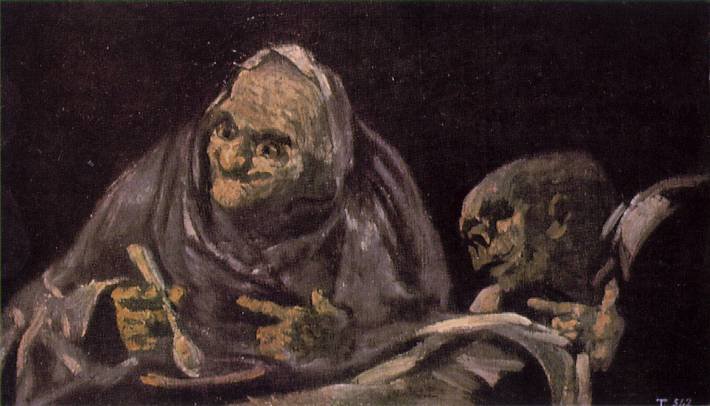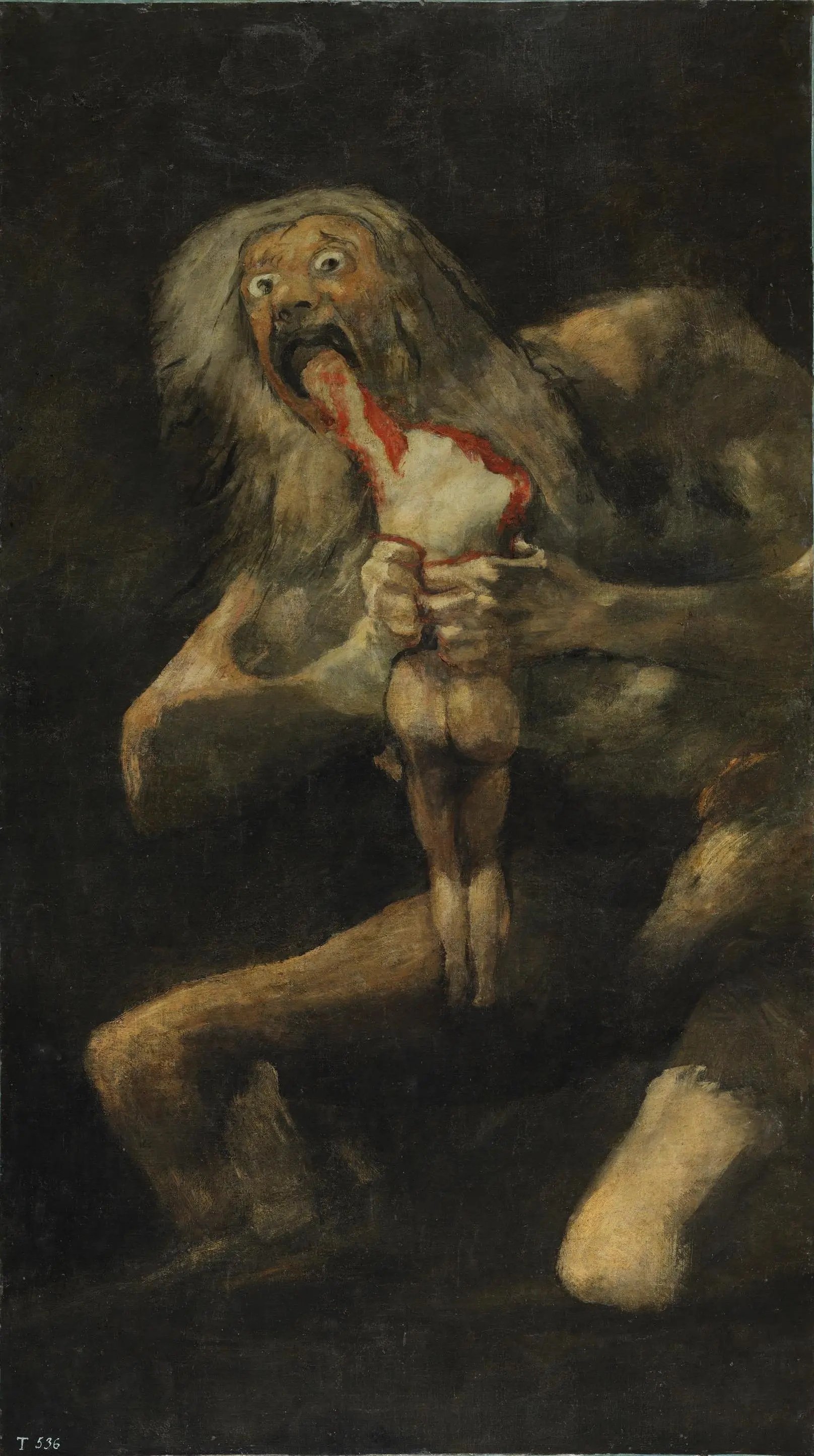Unearthing the Enigma: Exploring The Black Paintings Goya
In the world of art and its history, few artists have captured the essence of the human condition, the depths of despair, and the darkness of the human psyche quite like Francisco Goya. His enigmatic Black Paintings, especially the black paintings Goya created, stand as a testament to his genius and innovative vision. Journey with us, dear reader, as we delve into the life of this master painter, explore the haunting La Quinta del Sordo, and decode the secrets hidden within the Black Paintings. Let the darkness engulf you.
Key Takeaways
Explore the dark transformation of Goya’s Black Paintings, a chilling commentary on human nature and society.
Uncover his innovative composition techniques and emotional depth as you decode these enigmatic works.
Revel in their lasting legacy, inspiring renowned artists while connecting old masters with modern movements.
Francisco de Goya: The Man Behind the Black Paintings
Francisco de Goya
Francisco de Goya’s illustrious career began under the tutelage of the painter José Luzán, eventually leading him to the Royal Academy of Fine Arts in Madrid. Goya’s versatile artistry ranged from the whimsical and lighthearted to the heart-wrenching and grotesque. His father, Javier de Goya, a gilder by trade, may have played a role in shaping Goya’s artistic journey.
The “Disasters of War” series, Goya’s work profoundly influenced by the Peninsular War, vividly showcased the brutal reality of warfare. Amidst the conflict, Goya’s style underwent a conspicuous transformation, moving away from conventional painterly compositions and focusing more on narrative storytelling. This would be a harbinger of the darkness yet to come.
Becoming a Court Painter
Appointed as a court painter in 1779, Goya gained unprecedented access to the Spanish nobility during Goya’s lifetime. His masterful works capture the era’s grandeur and extravagance. His talent and versatility were evident in his depictions of the royal family and the unfortunate, capturing the stark contrast between the opulence of the court and the harsh realities of life for the destitute.
Goya’s villa near Madrid, La Quinta del Sordo, provided him a refuge from the outside world. This deaf man’s villa, also known as the “House of the Deaf Man,” was where Goya would create the enigmatic Black Paintings, including the haunting work “Dos viejos comiendo sopa” (Two Old Men Eating Soup). Goya’s deafness, a mysterious affliction, added an eerie layer of isolation to his life, while the nearby San Isidro area offered a contrasting lively atmosphere.
The Peninsular War and "Disasters of War" Series
The conflict between France and Spain from 1807 to 1814, known as the Peninsular War, profoundly shaped Goya’s art. His paintings during this time often depicted the horrors of war, such as in his 1808 series of etchings known as the “Disasters of War”. The gruesome themes of carnage, conflict, famine, heroism, retribution, mutilation, torture, rape, and other atrocities are ever-present in Goya’s ‘Disasters of War’ series.
During the Peninsular War, Goya’s artistic style underwent a dramatic transformation. He employed various techniques to illustrate the atrocities of the war in the “Disasters of War” series, including:
Etching
Drypoint
Watercolor
Aquatint
Through these mediums, Goya captured the anguish of the victims with his realistic portrayals of expressions, outfits, and settings. His ability to encapsulate the raw emotions and realities of war marked a divergence from the iconographical tradition and highlighted Goya’s artistic prowess.
The Black Paintings: A Dark Transformation



The Black Paintings emerged from a dark period in Goya’s life, marked by personal struggles and the turbulent political backdrop of the era. Painted directly on the walls of Goya’s villa, La Quinta del Sordo, these enigmatic murals harbor dark and haunting scenes of death, violence, and despair. His father, Javier de Goya, a gilder by trade, possibly had a significant influence on Goya’s artistic path.
A total of 14 murals make up the Black Paintings series. Goya, who was deaf at the time of their creation, painted these works in the seclusion of his country estate near Madrid. Suggestions have been made that Goya kept his Black Paintings hidden away from exhibitions or any public display. These enigmatic works have never been put on show to the public.
La Quinta del Sordo: The House of the Deaf Man
La Quinta del Sordo, Goya’s mysterious country estate near Madrid, served as the backdrop for the creation of his enigmatic Black Paintings. In February 1819, Goya acquired the villa, and it was within its walls that he would create the series of 14 compositions that would come to be known as the Black Paintings. Goya lived in the villa with his companion and devoted maid, Leocadia Weiss.
The villa, consisting of a ground floor and an upper floor, bore the weight of Goya’s dark and foreboding murals, a total of 14 compositions. The Black Paintings were created between 1819 and 1823, during a time of political turmoil and Goya’s own personal struggles. They were painted directly onto the walls of the villa, an unconventional choice that added to their enigmatic nature.
The Evolution of Darkness
Goya’s artistic evolution towards darker themes and unconventional motifs is evident in Francisco Goya’s Black Paintings. They served as a mysterious form of self-expression, almost like a cryptic visual diary, made in the shadows of privacy. Marked by daring composition techniques and profound emotional intensity, the Black Paintings lay bare Goya’s sinister artistic evolution.
The Black Paintings delve into the depths of the human psyche, exploring somber themes such as death, aging, conflict, evil, and witchcraft. These black paintings murals serve as a powerful visual representation of the darker aspects of human nature.
All rendered in a palette of blacks, browns, grays, whites, reds, and blues. The paintings are a testament to Goya’s innovative vision and ability to confront the darker aspects of humanity head-on, a legacy that would inspire future generations of artists.
Decoding the Black Paintings
To decode the enigmatic Black Paintings is to delve into Goya’s exploration of human nature, social issues, and personal torment. His innovative composition techniques and emotional depth are evident in works such as Saturn Devouring His Son and Witches’ Sabbath.
Unraveling the mysteries of these paintings, where the canvas began to take shape, with the help of art historians allows us to better understand the mind of the artist and the complexities of the world in which he lived.
Saturn Devouring His Son
Saturn Devouring One Of His Children
One of Goya’s most infamous Black Paintings is Saturn Devouring His Son, a gruesome portrayal of the Roman god Saturn consuming his own child in order to avert an ominous prophecy. Goya’s use of dark colors and expressive brushstrokes creates a somber mood and emotional impact, as the figures stand out against the contrasting blackened background.
While the specific meaning behind Saturn Devouring His Son remains uncertain, it is commonly seen as a representation of the bleakness and distress Goya both endured and observed. The painting serves as a haunting commentary on the human condition and the estrangement between the artist and society.
Witches' Sabbath
Witches' Sabbath
Witches’ Sabbath, another notable work from the Black Paintings series, explores themes of superstition, fear, and the darker aspects of humanity. In this painting, Goya depicts a gathering of witches, summoned by the Devil himself in the form of a goat. The painting reflects Goya’s condemnation of superstition and witch hunting during the seventeenth-century Basque witch trials.
Witches’ Sabbath, another of Goya’s works, serves as a biting critique of both organized religion and the societal dominance of superstition. The painting features:
Sinister, inverted symbols characteristic of witchcraft imagery
An eerie atmosphere that enhances the overall effect
Goya’s exploration of the darker side of human nature
A feeling of trepidation about society’s future
These elements continue to resonate with audiences today.
The Legacy of Goya's Black Paintings
Influencing art movements like Expressionism and Surrealism, the legacy of Goya’s Black Paintings has inspired numerous artists and attracted considerable scholarly interest. These enigmatic works have left an indelible mark on art history, reflecting the depths of human nature and the complexities of the world.
Today, the paintings can be viewed at the Museo del Prado in Madrid, where they continue to mesmerize and intrigue visitors from around the globe.
The Black Paintings in Art History
Serving as a cornerstone for Expressionism and Surrealism, Goya’s Black Paintings have profoundly impacted art history. Their influence on modern art movements and their continued relevance in the contemporary art world showcase the lasting power of Goya’s vision. The Black Paintings connected the old masters with the great moderns, including the movements of Expressionism and Surrealism, and inspired renowned artists such as Pablo Picasso and Edvard Munch.
The Black Paintings reflect Goya’s disillusionment with modern society and his depiction of the violent and horrific nature of humanity, serving as a powerful and haunting commentary on the human condition and the estrangement between the artist and society. These enigmatic works have been praised for their critical charge and revolutionary impact on Spanish painting, showcasing Goya’s ability to confront the darker aspects of humanity head-on.
Museo del Prado: Home of the Black Paintings
Goya’s awe-inspiring Black Paintings find their home in Madrid’s grand Museo del Prado. The museum houses 36 of Goya’s enigmatic Black Paintings, where visitors can view these haunting works and explore the museum’s extensive collection. It is highly recommended to purchase tickets in advance on the museum’s website to avoid extended waiting periods at the entrance gate.
At the Museo del Prado, the Black Paintings have garnered significant public and critical reception. These paintings, discovered on the walls of Goya’s house after his death, are considered some of the most disturbing artworks ever made. They have been praised for their critical charge and revolutionary impact on Spanish painting. The Black Paintings are one of the most popular exhibits at the Museo del Prado and continue to mesmerize audiences.
Summary
As we emerge from the shadows of Goya’s Black Paintings, we are left with a deeper understanding of the complexities of the human condition and the world in which we live. Goya’s enigmatic works continue to resonate with audiences today, serving as a powerful reminder of the darker aspects of humanity and the ever-present struggle between the artist and society. In the words of Goya himself, “The sleep of reason produces monsters.”
Frequently Asked Questions
-
Goya's Black Paintings reflect his deteriorating mental state, brought on by deafness and isolation in his 70s. Seemingly painted in complete solitude at the Quinta del Sordo, they evoke a hauntingly dark and disturbing atmosphere.
-
Goya's Black Paintings can be found in the Museo del Prado, one of the greatest art museums in the world. Transferred onto canvas by a restorer at the museum in 1874 and donated to the Spanish State in 1881, they remain in this revered institution to this day.
-
Delve into the world of Francisco de Goya with this gripping book that dives into the rich history of his "Black Paintings." Goya's 1984 publication by Priscilla Müller provides a comprehensive analysis and stunning images of Goya's work.



